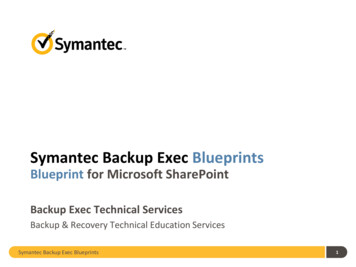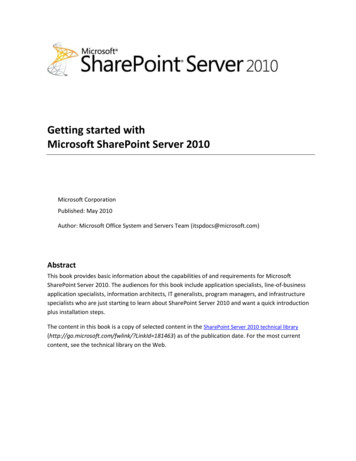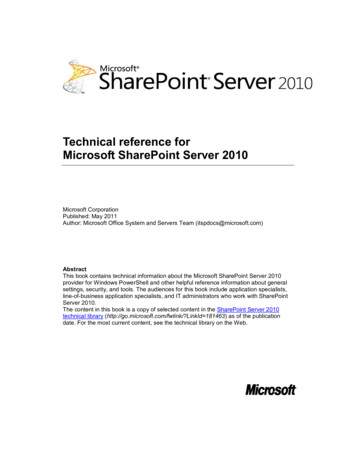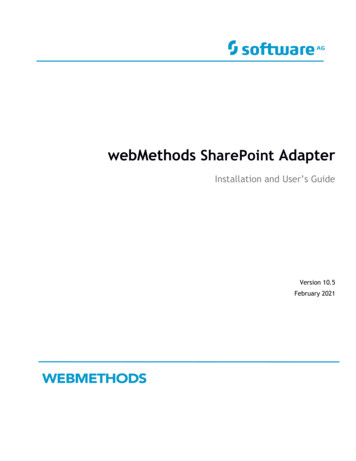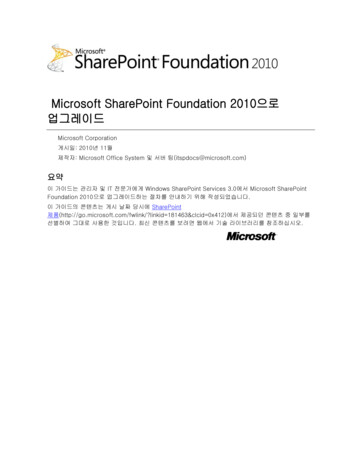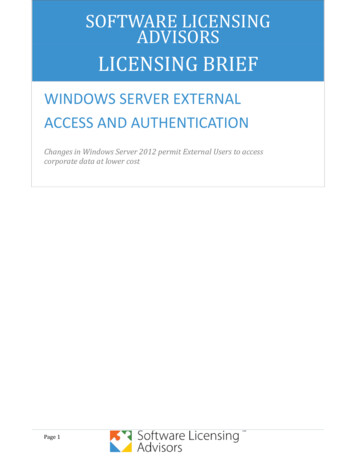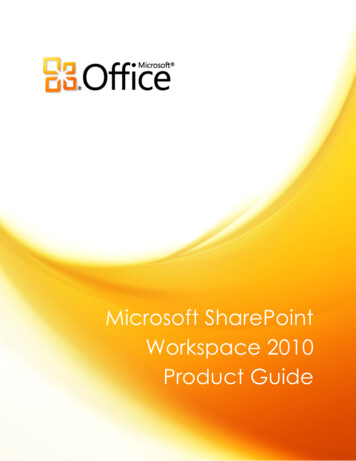
Transcription
Commercial Licensing briefLicensing Microsoft SharePoint ServerThis brief applies to all Commercial Licensing programs.Table of contentsSummary. 1What’s new in this brief . 1Details . 1Simplifying licensing. 1Concepts that provide a framework for SharePoint Server licensing . 1Microsoft SharePoint Server licensing. 2Use scenarios. 3SummaryThis brief clarifies the licensing of Microsoft SharePoint Server by defining concepts that provide a framework for SharePoint Serverlicensing. In addition, the brief gives some examples of how to license common use scenarios.What’s new in this briefThis brief replaces the previous version published in March 2014. There have been no licensing changes with this update.DetailsSimplifying licensingSharePoint Server simplifies SharePoint access and use. This is because SharePoint Server collapses internal and external use under a singlelicensing offering/model. Customers no longer need to look to SharePoint for Internet Sites to license anonymous access. Additionally,SharePoint Server integrates functionality that was previously available separately under FAST Search Server for SharePoint.Concepts that provide a framework for SharePoint Server licensingInternal users: Users who are the licensee’s or its affiliates’ employees and on-site agents and contractors.External users: Users who are not the licensee’s or its affiliates’ employees or on-site agents or contractors.Intranet: Website hosting content, information, or software that is accessible inside the firewall to internal users only.April 20171
Licensing Microsoft SharePoint ServerExtranet: Website hosting content, information, or software that is accessible inside the firewall to internal users and named externalusers only.Internet: Website hosting content, information, or software that is publicly accessible to all users (internal and external).Figure 1: Concepts related to SharePoint Server licensingFigure 1 illustrates the differences between intranet, extranet, and Internet websites, because these concepts apply to the licensing ofSharePoint Server.Microsoft SharePoint Server licensingMicrosoft licenses SharePoint Server under the Server/Client Access License (CAL) licensing model. The Server/CAL licensing modelrequires both a server license for each copy of the server software a customer installs and uses and CALs for the users (or devices) thataccess that software. CAL requirements vary based on user status, and CALs are generally required for internal users to access allSharePoint Server software. An exception to this is internal user access to Internet websites (public-facing websites such as e-commercesites). In this case, the SharePoint CAL requirement is waived. In contrast to the general requirement for CALs for internal user access,CALs are not required for external users to access SharePoint Server. In other words, the server license provides access rights for externalusers. The same criteria can be used for determining when CALs are required for SharePoint base CALs and Enterprise CALs; however,SharePoint Enterprise CALs are required only if functionality corresponding to the SharePoint Enterprise CAL is accessed. For moreinformation about which SharePoint features are part of the base product and which features are considered additional functionalityrequiring additive CALs, refer to 7.aspx or x.April 20172
Licensing Microsoft SharePoint ServerThe following decision tree illustrates whether a user needs a SharePoint CAL or not. “Restricted” refers to content stored inside thefirewall for internal access and possibly limited, identified external user access. “Public/Internet” refers to content stored outside thefirewall for broad, unrestricted access.Figure 2: SharePoint CAL decision treeUse scenariosThis document also illustrates common deployment scenarios to further explain the licensing requirements of SharePoint Server.Users can license these same deployment scenarios under device-based CALs.Scenario A: IntranetDescription: Internal users accessing content, information, or applications inside the firewall through a local area network (LAN) or theInternet. No other users have access.Example: A professional sports team sets up an intranet site that the manager, coach, and players access. It is also used for supportstaff such as the physiotherapist who is an on-site contractor rather than an employee, and for CAL requirements, an internal user. Anews reporter trying to access the SharePoint Server site is denied access.Licensing: Server: One SharePoint Server license per running instance of the software Internal Users: One CAL/userApril 20173
Licensing Microsoft SharePoint ServerFigure 3: Scenario A: IntranetIn Figure 3, the internal users (the team’s managers, coach, players, and on-site therapist) each must be assigned a CAL. Thisrequirement does not change if the same users are accessing the intranet site remotely from the team’s offices. Given that this is anintranet site, no external user access is permitted.April 20174
Licensing Microsoft SharePoint ServerScenario B: ExtranetDescription: An organization extends access to otherwise restricted content inside the firewall to a limited number ofidentifiable external users.Example: The Elm University publishes research papers that are available to specific educators from other universities (external users).This situation is an intranet plus extranet scenario.Licensing: Server: One SharePoint Server license per running instance of the software Internal users: One CAL/user External users: SharePoint CALS are not required; the server license permits external user accessFigure 4: Scenario B: ExtranetIn Figure 4, the internal users (the school’s faculty and staff) each must be assigned a SharePoint CAL. This requirement does notchange if the same users access the site remotely while they are off-campus. The identifiable external users (educators from otheruniversities) who are permitted to access otherwise restricted content inside the firewall do not require SharePoint CALs, becauseexternal user access is permitted under the server license. No other users are permitted to access the site.April 20175
Licensing Microsoft SharePoint ServerScenario C: InternetDescription: Internal users make content, information, and applications publicly available to users via the Internet (for example, on apublic-facing company website). A mix of internal and external users anonymously accesses the site, including employees. NoSharePoint CALs are required. External user access is permitted under the server license, and SharePoint CAL requirements forinternal users are waived for access to content, information, and applications made publicly available via the Internet.Licensing: Server: One SharePoint Server license per running instance of the software Internal users: CALs are not required External users: CALs are not requiredFigure 5: Scenario C: InternetIn Figure 5, access is unrestricted. The only license required is the server license. SharePoint CALs are not required to access content,information, and applications made publicly available to users via the Internet (that is, not restricted to intranet or extranet scenarios).The same licensing applies for an e-commerce site where access is not strictly anonymous. Again, SharePoint CALs are not required toaccess content, information, and applications made publicly available to users via the Internet.For specific terms and conditions for how to purchase SharePoint Server licenses, please consult the Product Terms. 2017 Microsoft Corporation. All rights reserved.This document is for informational purposes only. MICROSOFT MAKES NO WARRANTIES, EXPRESS OR IMPLIED, IN THIS DOCUMENT. This i nformation is provided to helpguide your authorized use of products you license; it is not your agreement. Your use of products licensed under your commercial license agreement is governed by the termsand conditions of that agreement. In the case of any conflict between this information and your agreement, the terms and conditions of your agreement control. Prices forlicenses acquired through Microsoft resellers are determined by the resellerApril 20176
Licensing Microsoft SharePoint Server Scenario B: Extranet Description: An organization extends access to otherwise restricted content inside the firewall to a limited number of identifiable external users. Example: The Elm University publishes research papers that are available to specific educators from other universities (external users). This situation is an intranet plus extranet scenario.

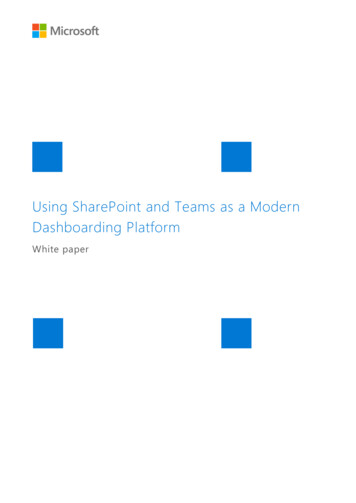
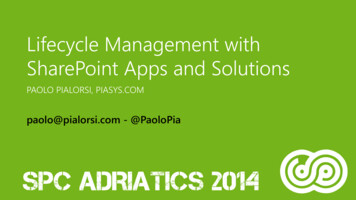

![Microsoft SharePoint Designer Crack [Mac/Win] (Final 2022)](/img/47/microsoft-sharepoint-designer.jpg)
